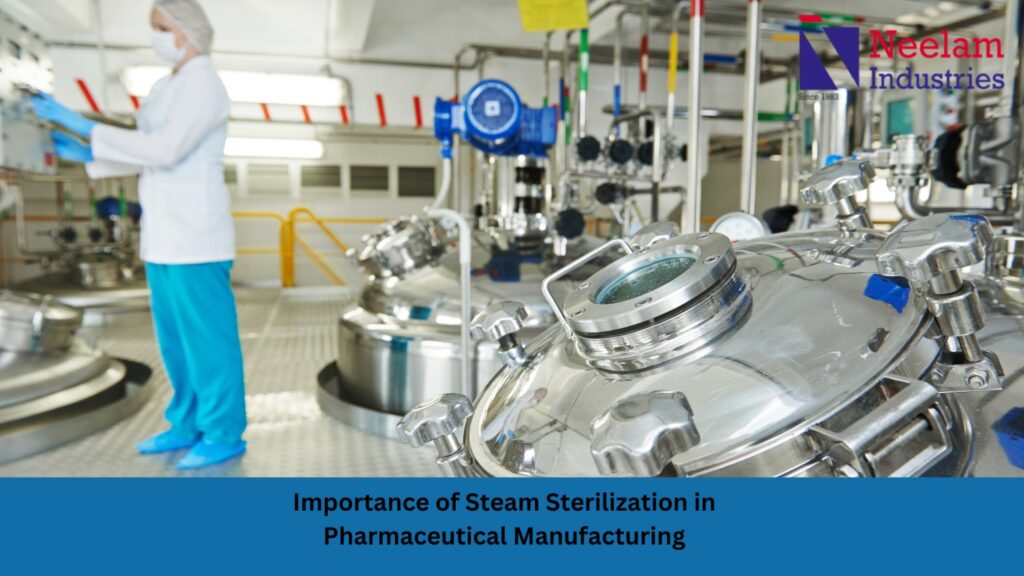The pharmaceutical sector is one of those businesses where sterilization and cleanliness are essential. Clean steam, produced from RO or DI-treated water, is used in medical procedures. Additionally, they frequently make use of steam sterilizers made by steam sterilizer manufacturers in India, also known as autoclaves, which are devices that use pressurized steam to destroy bacteria, viruses, and other germs on objects put within the sterilizer chamber. Because these autoclaves can be as little as a microwave, it is simple to store them in labs, clinics, and other healthcare settings. You can even move them from one room or facility to another. Larger types that can disinfect numerous pieces of equipment simultaneously are sometimes used in busy labs and hospitals.
What is Autoclave
An autoclave, sometimes referred to as a steam sterilizer, is a sterilizing apparatus with a pressure chamber that employs high temperatures and pressures to sterilize objects. By combining pressure and temperature, it generally sterilizes and disinfects equipment in a variety of industrial, scientific, and medical procedures and situations. Autoclaves are self-stealing steel tanks with a variety of sizes that are employed in many different types of businesses for high-pressure and high-temperature scientific procedures such as sterilization. Since a cylindrical form allows it to withstand higher pressures than a box or cube, the autoclave has this shape.
The best technique to sterilize lab equipment—especially for items that handle liquids—is by autoclaving it to get rid of potentially dangerous bacteria, viruses, fungi, and spores. The autoclaving process makes use of the fact that water’s (or steam’s) boiling temperature rises under high pressure. It is sterilized in an autoclave, which sanitizes the equipment by applying high pressure and maintaining a recommended temperature of 250°F (121°C) for 15 to 20 minutes. Several fields use steam or autoclaving sterilization, including microbiology, dentistry, medicine, and veterinary science.
Components of Steam Sterilizer
Heating Element, Temperature Controller, Pressure Sensor, Chamber, Door Gasket, Solenoid Valve, and Water Level Sensor are the major components of an autoclave. When the autoclave door is shut and the chamber is sealed, a vacuum pump removes all of the air and replaces it with steam. The steam is now under pressure in order to achieve the required sterilization for the allotted time. After the cycle is over, the lab apparatus is carefully taken out of the chamber and the steam is drained.
Role of Steam Sterilization Process in Pharma Industries
It is essential to keep many objects in pharmaceuticals free of germs, bacteria, fungi, and other hazardous pollutants. These items include test tubes, pipettes, Petri dishes, needles, tubes, and containers. This is for the safety of lab workers and to avoid cross-contamination during studies. In certain cases, spot sterilization or exterior washing might not be enough to guarantee the sterility of the instruments.
Make sure the liquid handling equipment is suitable for steam sterilization at the suggested temperature before putting it in the autoclave. For example, materials composed of polyethylene, polyurethane, or polystyrene, as well as certain substances like acids and bases, should never be autoclaved.
Importance of Steam Sterilization
Although autoclaving or steam sterilization is not a novel procedure, it is a tried-and-true method that is secure, safe, and ecologically benign. It is also crucial to remember that because of the high temperature and high pressure involved in the process, not all materials are suitable. There isn’t a more effective method, nevertheless, for the items for which it is appropriate. Make sure the sterilizer you choose fully satisfies your needs when making your selection; a high-quality autoclave may be used for as long as 20 years.

